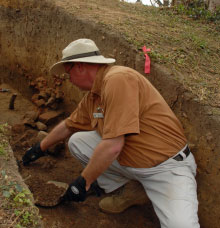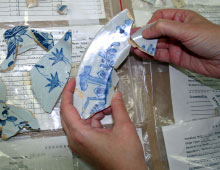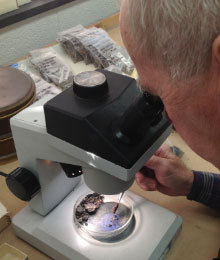What Our Archaeologists Do
Field, Lab, and Documentary Research

Field Research
Archaeologists continue to explore Williamsburg's 301-acre Historic Area more than 85 years after the first excavations began at the site of the Capitol. This work fuels new research, producing the data to examine 17th- and 18th-century life from fresh perspectives.
Our archaeologists can be found in the field year-round, but most frequently during the summer.

Lab Research
Once out of the ground, artifacts are taken to the archaeological lab where they are washed, cataloged, analyzed, and interpreted. In addition to their focus on artifacts from recent excavations, our curators return frequently to previously excavated sites to ask new questions. Zooarchaeology and environmental studies are important components of our lab research program.
Located on the edge of the Historic Area, Colonial Williamsburg's archaeological lab is home to a collection of more than 20 million artifacts—and counting. This collection is a valuable resource for Colonial Williamsburg staff, archaeology students, and outside scholars.

Areas of Investigation
Together, Colonial Williamsburg's archaeological lab and field staff examine topics that take us beyond the boundaries of individual sites. These areas of research are dynamic: they shift and expand as new questions arise. Some of the general areas in which our archaeologists have focused are:
- Archaeology of the enslaved
- Foodways research
- Environmental archaeology
- 17th-century settlement
- Garden archaeology
